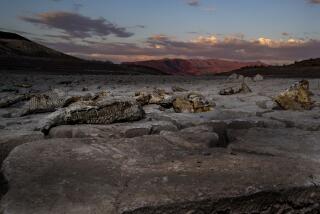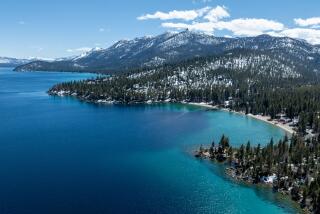Great Lakes Region Facing Water Shortage
WASHINGTON — Despite being surrounded by the world’s largest supply of fresh water, the Great Lakes region faces the possibility of dry wells and landlocked docks this summer, officials said Friday.
Two straight unusually warm winters have meant less snowfall and greater evaporation, leaving water levels below April averages on all five Great Lakes and Lake St. Clair.
The International Joint Commission, which advises the U.S. and Canadian governments on water issues, warned communities to start making plans for dealing with water problems.
“It is by no means too early for those affected to consider what alternatives may be available to them in light of declining water levels,” said Leonard Legault, who heads the committee’s Canadian section.
The Great Lakes basin is home to more than 33 million people.
Water levels have dropped on all five lakes, but the situation is most extreme on lakes Michigan and Huron. They are about 21 inches below the seasonal average and logged the greatest two-year decline--2.9 feet--since measurements were first recorded in the 1860s.
Lake levels were at record highs as recently as 1997, making the decline even more dramatic.
Higher winter temperatures in the past two years have meant less ice to protect the lakes from evaporation and less melting snow to replenish tributaries and ground water, said Frank Quinn, senior hydrologist at the Great Lakes Environmental Research Laboratory in Michigan.
Low lake levels cause problems for barge operators, who must leave some cargo behind to keep their vessels light enough to avoid bottoming out.
They’re also a problem for navigational channels and marinas, which have to be dredged to avoid boat damage.
“It looks like we’re going to have a 20% increase in the number of projects that we dredge this year,” said Col. Jim Houghnon of the U.S. Army Corps of Engineers.
There are other problems too:
* Some communities’ water intake pipes could be exposed if levels drop more.
* Waste water might not be diffused as well in shallower water, leading to contamination problems.
* Homeowners in the Great Lakes basin could see wells run dry.
Thomas Baldini, who heads the commission’s U.S. section, said he cannot identify the areas where wells might go dry because of a lack of reliable data. The Great Lakes states and provinces “need to do a better job of mapping the ground water,” he said.
More to Read
Sign up for Essential California
The most important California stories and recommendations in your inbox every morning.
You may occasionally receive promotional content from the Los Angeles Times.









